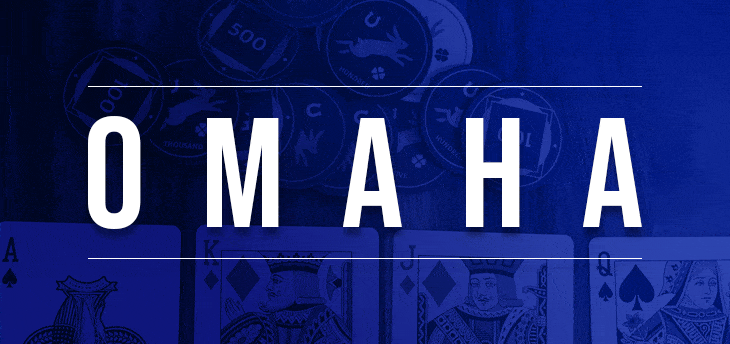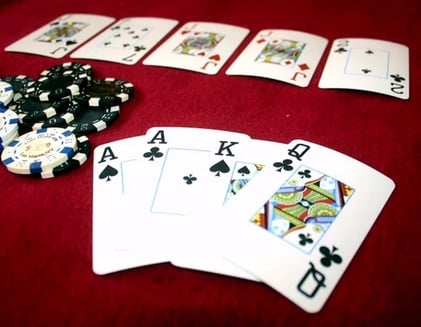The Beginner’s Guide to Pot-Limit Omaha (PLO) Poker

Now, you know that feeling when you’re caught reading a brochure for an insanely complicated piece of IKEA furniture? Yeah, that’s exactly how many folks feel when they first encounter Pot-Limit Omaha or PLO poker. But, hey, who doesn’t love a good challenge? Buckle up, amigos, because we’re diving head-first into this multifaceted poker variant. Oh, don’t worry! The water’s just fine.

Flop, Turn, River: The Heartbeat of PLO Poker
In the melodious symphony of PLO poker, the flop, turn, and river are the crescendos that make the game an art form. After the initial betting frenzy post the hole card deal, we encounter the flop. This is when the dealer reveals three community cards, laying them out like an open invitation to possibilities. It’s a moment of revelation where your hand starts to find its melody, or sometimes, its dissonance. Then comes the turn, the addition of a fourth community card, adding another note to your growing poker tune. This card can change the harmony entirely, turning losers into potential winners, and vice versa. And finally, we reach the river, the fifth and final community card. It’s the climax of our poker symphony, often deciding the fate of the hands in play. With each of these stages, the betting continues, crescendoing in intensity as players strive to outmaneuver each other, using their two hole cards and the community notes to compose their winning masterpiece. Remember, in PLO, it’s all about creating the perfect blend of your own cards and the communal offering to hit that high note of victory.
Betting: Where Things Get Real
Alright, you’ve got the basics. Now, let’s talk about the part that gets your adrenaline pumping—the betting. In the PLO poker arena, the betting amount is pot-limit, meaning you can bet anything from the minimum bet (the big blind) to the current total pot size. Sounds easy, right? Until you realize the pot size changes like a chameleon. And if there’s one thing I’ve learned over the years, it’s that in PLO, predicting pot size is like predicting the weather in London. Good luck with that!
Drawing Hands: The Ace Up Your Sleeve
Let’s say you’re at a PLO table, sipping your espresso and checking your hole cards. You notice they have the potential to develop into something amazing—a bit like a caterpillar turning into a butterfly. These, my friend, are your drawing hands.
Drawing hands are precious in PLO poker, sometimes even more than made hands (hands that are good as they are). Don’t believe me? Picture this: You’re holding four cards, two of one suit and two of a second suit. Now, isn’t that the potential for a lovely flush waiting to bloom? Keep an eye out for these drawing hands—they can be absolute game-changers.
Reading the Board: A Masterclass in Sherlocking
PLO poker isn’t just about your cards. It’s also about guessing what everyone else at the table might be holding. This is where the term “reading the board” comes in. This skill, often neglected by beginners, is like having a sixth sense or a set of X-ray glasses. Alright, I might be exaggerating, but reading the board effectively can often be the difference between a pat on the back as you gather all of the chips into your pile or a kick in the… well, you know.

Position: The Art of Sitting Right
In PLO poker, where you sit isn’t just about the best view. It’s about when you act in the betting round. Sitting in a late position, like in Texas Hold’em, can be a great advantage, as you get to see how your opponents bet before you have to make your move. It’s like having a sneak peek at the exam paper while everyone else is still scribbling away. Remember, information is power, just don’t let the power go to your head.
The Emotional Roller Coaster
PLO poker can be a thrill, but it can also test your emotional resilience. With the complexity and unpredictability of this game, you might as well be on the world’s most insane roller coaster. But isn’t that part of the fun? As long as you’re in for the thrill and play responsibly, every dip and rise makes the game even more exhilarating.
Conclusion: Mastering the Symphony of PLO Poker
There you have it, a beginner’s introductory guide to PLO poker. Remember, mastering this game isn’t just about understanding the rules; it’s about balancing strategy, skill, and a bit of intuition—like conducting a symphony. So, ready to channel your inner Mozart? Just keep practicing, stay patient, and let the cards do the talking.
